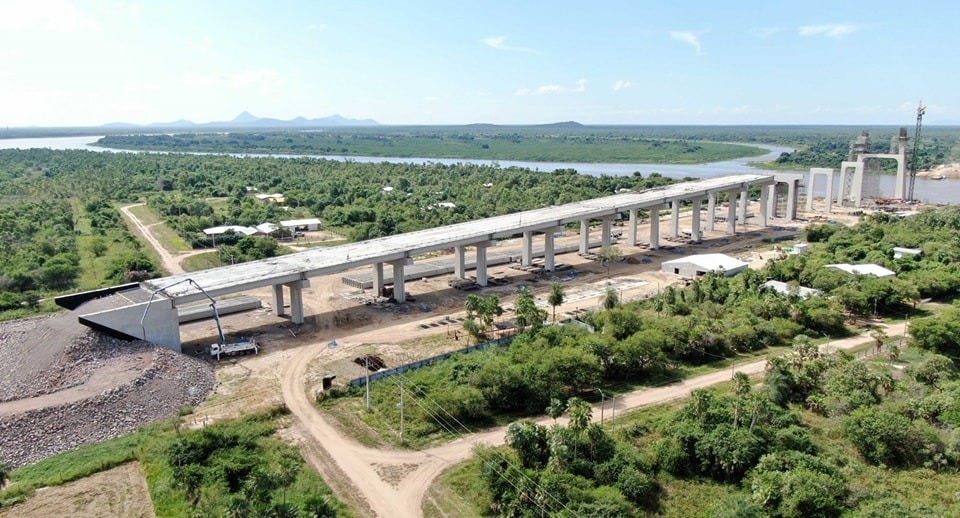Inside Paraguay’s $5bn Infrastructure Drive
The country is spending big on roads and bridges. Who benefits?

Paraguay’s Route 19 was inaugurated just three years ago, but it already needs two more lanes — and fresh asphalt. The weight of shipping containers has pockmarked the highway with potholes as truck after truck rumbles along this corridor of rice farms en route to riverports in Villeta, around 30 kilometers south of Asunción. Here, commodities embark downstream to Rosario and Montevideo, and goods are transhipped back up to Paraguay’s capital.
Take the route south, following the curve of the Paraguay River, and there’s more evidence of the infrastructure projects changing the face of Paraguay. In the city of Pilar, construction of the costanera — a new waterfront to buffer against floods and provide public parkland — is proceeding to phase two of three. Nearby, a proposed bridge backed by the CAF development bank will link the department of Ñeembucú to the Argentine provinces of Chaco and Corrientes.
If built, the US$200 million project will become the third such construction over the Paraguay River in just a few years: a jump from a total of two to five. In Asunción, cars now cross a 600-meter bridge to the Chaco; further upriver, trucks will soon do the same at the small outpost of Carmelo Peralta, bearing Brazilian beef and soybean from Mato Grosso do Sul en route to markets in Asia.
This bridge — which the Ministry of Public Works (MOPC) expects to complete in 2026 — is part of the Bioceanic Corridor, a 532-kilometer highway across the Paraguayan Chaco to connect Brazil to the Chilean Pacific, financed by development bank Fonplata. The first section of the corridor, running 275 kilometers from Carmelo Peralta to the central Chaco hub of Loma Plata, is complete. In August, a consortium started on the second, a 224-kilometer leg from Mariscal Estigarribia to Pozo Hondo on the Argentine border due to be inaugurated in two years’ time. A final section will connect the two, but for now Route 9 serves the purpose.
The road(s) to prosperity
Put these pieces together, and the Peña administration aims to invest US$5.5 billion — close to 4% of GDP — in things like roads, ports and bridges through 2028, following the lead of successive governments that have directed more spending to hard infrastructure through public-private partnerships and multilateral finance. Since 2013, Paraguay’s annual infrastructure investment has risen from under 2% of GDP to about 3%, a jump necessary — but still insufficient — to close an infrastructure gap that the Inter-American Development Bank (IDB) estimates at US$24 billion over the next decade.
Keep reading with a 7-day free trial
Subscribe to The Paraguay Post to keep reading this post and get 7 days of free access to the full post archives.



